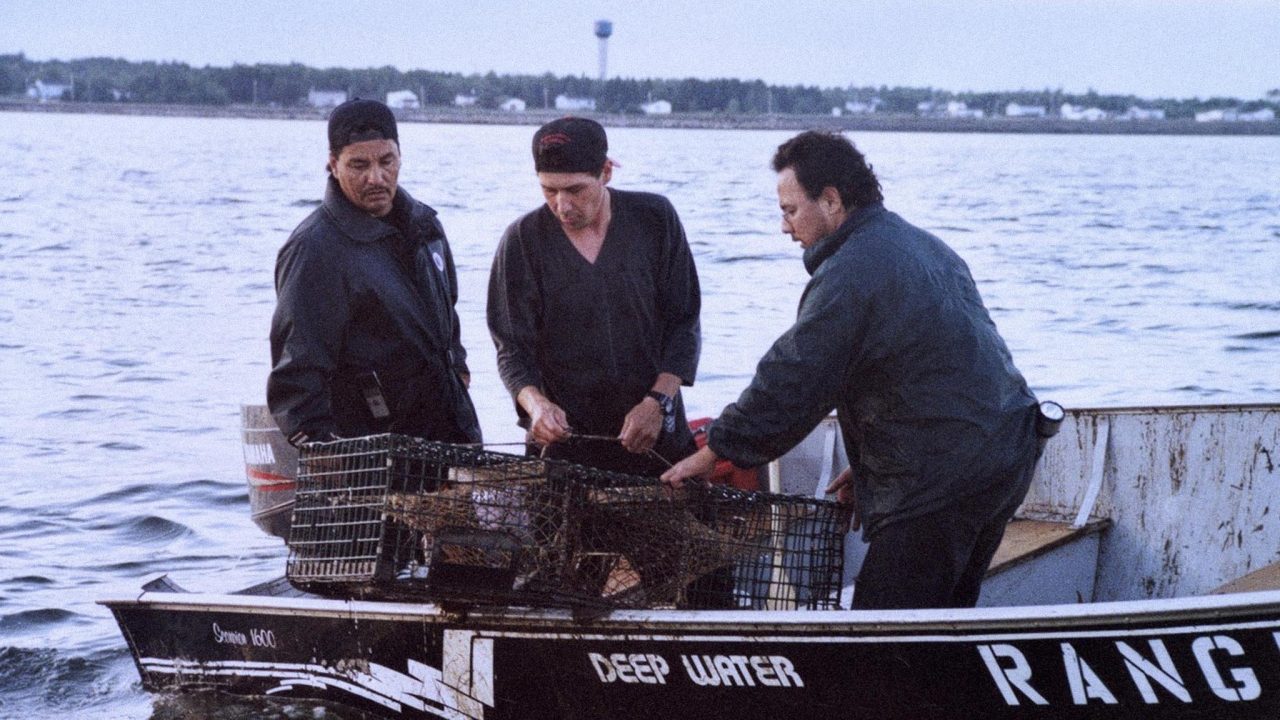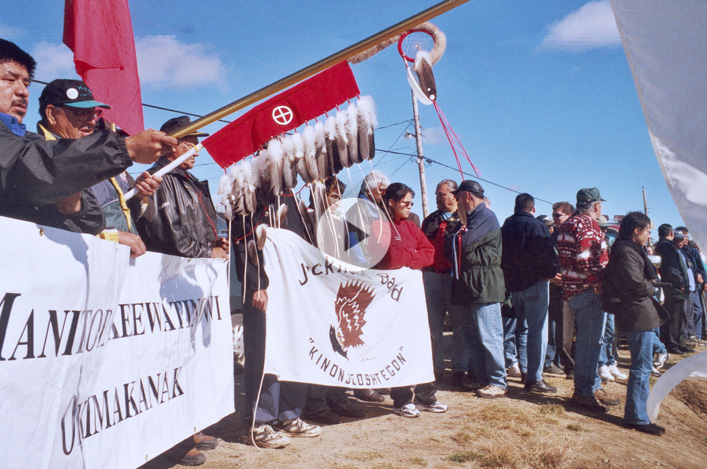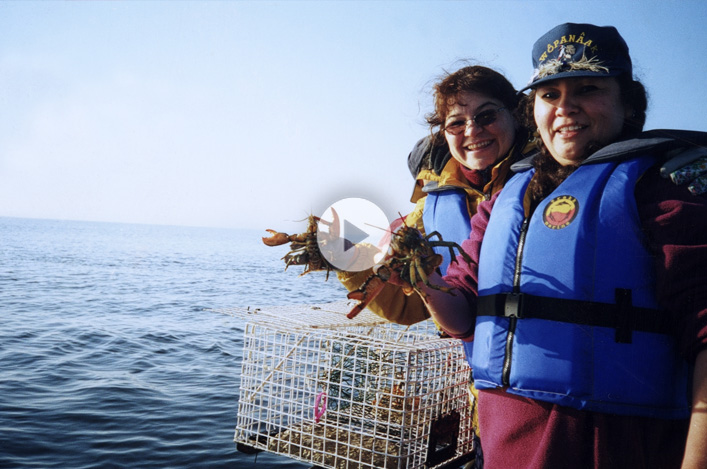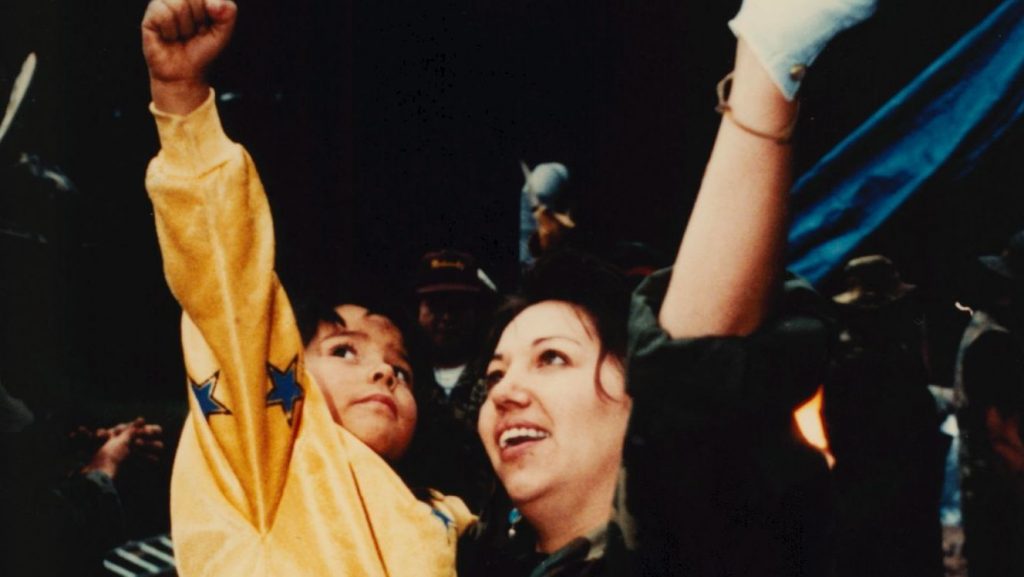
Is the Crown at War with Us? | Indigenous Solidarity and Responsibility Towards Future Generations
Is the Crown at War with Us? | Indigenous Solidarity and Responsibility Towards Future Generations
This blog post is part of a series of posts examining NFB productions that may be useful in helping viewers to rethink Canada’s relationship to First Nations peoples, who struggle to defend the rights they’ve won through the courts and/or treaties. These four NFB titles offer educators and students the opportunity to learn more about the impact of colonization on four First Nations communities, and to see their stories told by the Indigenous directors who filmed them. Each film focuses on an issue that is of prime concern to the First Nations.
Alanis Obomsawin’s 2002 documentary, Is the Crown at War with Us?, highlights the responsibilities of today’s communities towards future generations.
Is the Crown at war with us?, Alanis Obomsawin, provided by the National Film Board of Canada
The following questions could be discussed before viewing the film:
- What has been the response of the Canadian state to the land claims and survival needs of First Nations?
- What is the Burnt Church First Nation community’s understanding of its responsibilities towards future generations?
“If we do nothing, then we get peace but die spiritually and physically.”
In 1993, Mi’kmaq man Donald Marshall, Jr., challenged the law prohibiting the Mi’kmaq from fishing without a licence. Six years later, the Supreme Court of Canada finally issued a ruling, affirming the Mi’kmaq’s historical fishing rights as outlined in treaties signed in 1752 and 1761.
In 2000, under pressure from the local non-Indigenous fishing community, the Mi’kmaq’s rights were ignored by the federal government under Prime Minister Jean Chrétien and by the Minister of Fisheries and Oceans, Herb Dhaliwal, and the Mi’kmaq were banned from fishing.
Is the Crown at War with Us? explores the so-called “Burnt Church crisis” in detail, including the history of the struggle of the Burnt Church First Nation, one of four out of 35 Mi’kmaq communities that refused to sign away their rights for federal cash payments. The film covers events as far back as the 1500s, providing valuable First Contact history for teachers and students. Remarkable film footage also illustrates the lengths the government went to in order to destroy or confiscate fishing traps and violently attack Mi’kmaq fisherman who were exercising their Supreme Court rights. (The federal government spent $50M in one year alone to fight the impoverished Mi’kmaq of Miramishi Bay.)
The conservationist practices of the Mi’kmaq included the creation of their own Esgenoopetity Rangers, who managed and protected their fishery 24/7. This management plan sharply contrasted with the overfishing practices that were allowed and encouraged by the Department of Fisheries and Oceans (DFO) for the benefit of non-Indigenous and commercial fishermen.
In the face of violent actions taken by the DFO, a solidarity movement grew that included prominent Indigenous leaders from across Canada and the US, who lent support and encouragement to the resistance movement.
The Mi’kmaq’s struggle was necessary to establish rights that already had been won but that needed to be upheld, for the sake of their children and to protect their right of self-determination. Teachers will benefit from the history lesson provided in this documentary, which also reveals how the Indian Act created the divisive Band Councils that mirror European governance systems.
Go Deeper:
- Solidarity actions were important to the three major resistance struggles.
- What is the role of solidarity among the Indigenous peoples across Canada and North America?
- What were some of the landmark struggles fought elsewhere?
The theme of the shared responsibilities of today’s communities towards future generations is also very much at the heart of the three other films examined in this series of posts:
Pour lire cet article en français, cliquez ici.
Carol Arnold is of Métis-Cree ancestry on her mother’s side and was raised in the Métis community of Lac Ste. Anne, also known as Manito-Sakahigan. She has been a teacher for over 30 years in both Alberta and British Columbia, specializing in social studies, BC First Peoples and English. Although she teaches full time, she is involved in Aboriginal education workshop development and delivery for teachers in BC through her in the BC Teachers’ Federation. She loves using NFB films to teach her courses and finds that the NFB’s catalogue of Indigenous films contains excellent historical footage, in addition to documenting current events in Canada and the world.
Discover more Educational blog posts | Watch educational films on NFB Education | Subscribe to the NFB Education Newsletter | Follow NFB Education on Facebook | Follow NFB Education on Twitter | Follow NFB Education on Pinterest



